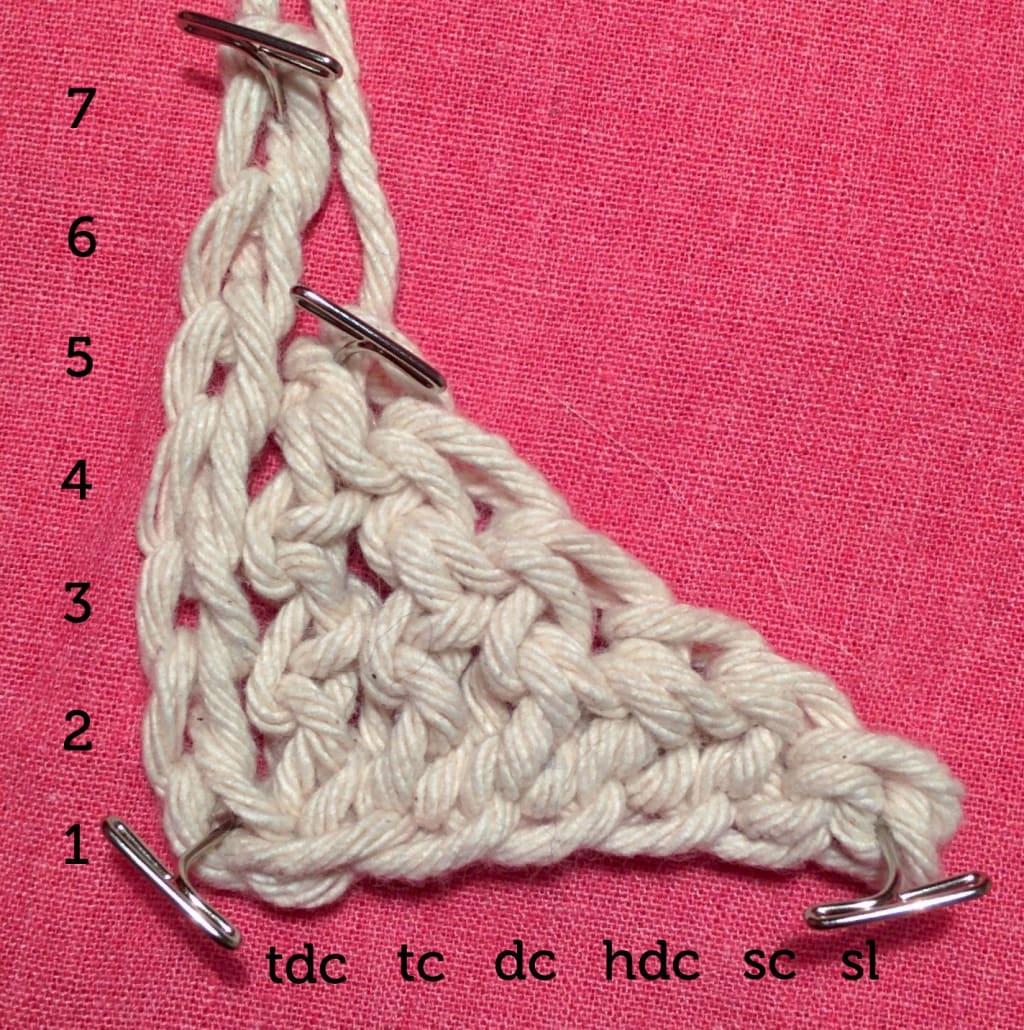7 Basic Crochet Stitches
What Every Beginner Should Master Before Reading Patterns

Crocheting is more than having the most basic materials. You have to know what you are doing, especially when you start working on patterns other people have created. Of all the patterns I've worked through, I found that there are 7 basic types of stitches that one must know before they can move on to patterns or more advanced stitches, all of which include one or more of these kinds of stitches. Before we begin, I must clarify that these descriptions are based off of American standards, not UK standards. I will do another article later on that will compare the American crochet stitches to the UK crochet stitches.
1. Chain

The chain is the easiest, as well as the most common stitch, in crocheting. It is the starting line for nearly every project, from certain hats and scarves all the way to baby booties and blankets, not to mention many of the more complex stitches. When chaining, all you do is draw your yarn around your hook and draw it through once, making a loop.
2. Slip Stitch

Slip stitch is very similar to the chain, but it's less common in patterns and other complex stitches, due to how little it seems to add to your project. Regardless, it's still one of the most basic stitches, and, once enough rows have been added to show off the design, it is a very sturdy stitch. When doing a slip stitch, you insert your hook through the stitch, yarn over, and pull through two loops, leaving one loop on the hook.
3. Single Crochet

The single crochet is one of the smaller stitches, but it is the baseline of the design of all other stitches. Simply enough, all you do is insert the hook into the stitch, yarn over, pull through one loop, yarn over, draw through two loops.
4. Half Double Crochet

Before you say anything, yes, there is a double crochet stitch, but this half double is the stitch that is actually the halfway mark between the single crochet and the double crochet. As unpopular as it is, it's still a very important stitch to know before learning the more complex stitches and patterns. The half double is constructed when you wrap your yarn around the hook, insert the hook into the stitch, pull through a single loop, yarn over, then pull through the remaining three loops.
5. Double Crochet

If crocheting was comparable to baking, the double crochet would be the flour. This stitch, along with the chain, is the most used stitch when crocheting, and is used for nearly every stitch and project. To construct this stitch, you draw your yarn around the hook, insert the hook through the base stitch, yarn over, draw through the first loop, yarn over, draw through two, yarn over, and draw through the last two.
6. Half Triple Crochet

Much like the half double crochet, the half triple crochet is the halfway mark between the double crochet and the triple crochet. It is done by drawing your yarn around your hook twice rather than once, inserting your hook into the stitch, yarn over, draw through two loops, yarn over, draw through the remaining stitches, leaving a single loop on the hook.
7. Triple Crochet

Also known as the treble crochet, this stitch gives the most height to the row, making it easier to finish your project in less time. When doing the triple crochet, you wrap your yarn around the hook twice, insert the hook into the base stitch, yarn over, pull through two, yarn over, pull through two, yarn over, and pull through two a final time, leaving one last loop on the hook.
Now that we've gone over the basic seven stitches, you should be able to follow any pattern labelled for beginners, as well as begin learning about even more complex stitches. Before you do, though, I highly recommend mastering the basic seven stitches, which can be accomplished by making simpler items, such as scarves or blankets. Thanks for reading, and I hope you'll continue reading my articles on crocheting.
About the Creator
Yarnwork Joys
Learn all about the art of yarnwork and it's long, proud history.






Comments
There are no comments for this story
Be the first to respond and start the conversation.